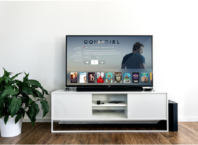If you’re in the market for a new laptop, you have a plethora of options to choose from. Picking the best laptop from the bunch can be a tad overwhelming. So how do you pick the right one from the bunch?
Laptops come in different sizes, with various features, laptop specs, and price points, making it even more difficult to pick the right laptop. You can Google a top 10 list of best laptops and pick the first one, but what if you can’t afford it? A much better approach would be to conduct your laptop search by specs and get one whose specs apply to your needs.
In today’s guide, we’ll be looking at some laptop specs you must consider when doing your laptop shopping.
Contents
Size
Before we get to the technical stuff, the first specification to consider when buying a laptop is its size. Laptops come in various sizes, and some might be too large or small for you. Maybe you want something that you can carry around all across campus, or you want a massive screen for your gaming.
If portability is your main concern, you should consider going for something with a smaller screen. That way, you can easily slip it into your backpack or leather pouch. Most computer companies market their small, thin, and lightweight laptops as ultrabooks, so “ultrabook” is the buzzword for smaller laptops
For screen size, look for something between 12.2 to 13.3 inches. These laptops should weigh about two pounds or three at most, the perfect weight for a camping trip or hiking.
If you’re looking for a daily driver or work laptop, you should probably get a large one. That’s because you rarely have to carry your laptop around, and you need as much screen real estate as you can get.
RAM
RAM, or random access memory, is a temporary storage space where the computer stores memory that it needs to obtain immediately or in a very short time. Having lots of RAM enables programs to boot faster and run smoother. If you’re into intensive gaming or run heavy programs, look for a laptop with a large RAM capacity.
As a rule of thumb, steer clear from any laptop with 2GB RAM. We aren’t in the 90s or early 2000s; 2GB of RAM only makes for a frustrating laptop experience. If worse comes to worst, get a laptop with at least 4GB RAM.
If you’re looking for even better performance, consider a laptop with 8 GB RAM. Some laptops even come with up to 32 GB. If you’re an intense gamer, you can consider laptops with 16+GB RAM.
It’s worth noting that you can upgrade RAM on some laptop models, but not all of them. If you can upgrade your laptop’s RAM, it probably has a cap on how much RAM you can upgrade it to. For instance, most 4GB laptops allow RAM upgrades of only up to 8 GB.
CPU
You can think of the CPU or Central Processing Unit as the brain of the computer. The CPU is the part of the computer that processes data into meaningful information. As such, it’s one of the most crucial specifications to look at when buying a computer.
The processor is to the computer what and the engine is to a car. Just like ultra-fast cars are expensive, ultra-fast processors will also run your tab. However, you don’t need a top-of-the-line processor to accomplish basic tasks with your laptop.
Typically, for intel processors, the more cores a processor has, the faster it is. However, all processors boil down into three categories, and they are:
Low-end Processors
For low-end processors, think along the lines of Intel Pentium, Intel Celeron, Intel Atom, and AMD E-series. These processors can only handle basic activities like browsing and Microsoft office packages.
Mid-range processors
Mid-range processors are a step above low-end processors. They can handle slightly heavier tasks, but not hefty ones. Good examples of mid-range processors include Intel Core M3 to M7.
Mid-range processors are great for your secondary laptop, not your daily driver. That’s because laptops with mid-range processors can’t handle heavy programs and aren’t too good at multi-tasking. If you need spare or business laptops, you can get those with mid-range processors that suit your needs.
High-end processors
High-end processors are the crème de la creme of processors. Great examples are the Intel Core i6 and i7 processors when they first came to the market. These processors can run the heaviest games and programs without flinching.
Laptops with high-end processors typically cost upward of $1000, but if you do your digging, you can snag yourself one for about eight hundred bucks. You won’t need a laptop with a high-end processor for normal computer operations.
If you want to go all out and the best gaming laptop specs, you can get yourself one with a luxury processor. As the name suggests, a luxury processor costs a pretty penny, but it’s worth it for some people. These people are scientists and business people who handle hardcore business analytics and complex vector-based processing.
Some great examples of a luxury processor are a few of the Intel Xeon series processors. Luxury processors are the processors you find in supercomputers.
The Operating System
You can never overlook the operating system when buying a laptop. There are three major operating systems for the average computer user. The three major computer operating systems are:
Windows 10
Windows 10 is the latest version of Microsoft’s Windows series. Most work laptops come with Windows by default. If you’re shopping for a laptop, there’s a high chance that you’ll get a Windows laptop.
Microsoft’s Windows 10 packs a ton of features to improve user experience and boost productivity. Some of the most notable features include Microsoft’s Virtual Assistant and Cortana. Cortana can do everything from schedule reminders, conduct internet searches, and set alarms.
You can also ask Cortana questions and ask her to find items on your computer. Another excellent feature of Windows 10 OS is Task View. Task view enables you to create different virtual desktops if you need to multi-task.
Windows 10 is an excellent option because of two major reasons, familiarity, and compatibility. You’ve probably used Windows more than a few times in your life. What’s more, most apps and programs on the market are compatible with Microsoft’s Windows.
Apple OS X
If there’s an operating system giving Windows 10 a run for its money, it’s Apple OS X. All the latest Apple desktops and laptops run on Apple OS X. The problem with Apple laptops is that you’ll have to dig deep into your pockets to own one, especially the latest models.
That said, some people are willing to pay upwards of $1300 for an Apple desktop. These laptops have been the go-to for creatives around the world. That’s because they can run dynamic applications like FL Studio and Dreamweaver seamlessly.
Apple laptops also have superior screen quality and a more functional keyboard, making them ideal for creative projects. There’s nothing much that gives Apple OS X an edge over Windows. Most people that go with Apple computers get them as a personal preference.
However, if you use a piece of software that can run on Mac, your hands are pretty much tied. If neither Windows nor Mac fits your fancy, you can consider Chrome OS
Chrome OS
Chrome OS is the latest entry into the operating system game. As you can tell by the name Chrome OS is an operating system by Google. If you have no clue what Chrome OS is, you’re not alone; most people don’t even know Chrome OS exists.
Google first created Chrome OS as a student-oriented operating system. With time Google added more features so that it could appeal to a general customer base. Nowadays, you can use a Chrome OS laptop even for business activities.
Chrome OS laptops or Chromebooks are usually a more affordable option. That’s why they’re ideal for students. They’re also a great option if you mostly work on the cloud. That’s because some Chromebook models don’t allow you to download any programs.
Laptop Specs Take Top Priority
When shopping for your next laptop, remember that the laptop specifications should be your primary selection criteria. That way, you can get the most value for your money and get a laptop best suited to your needs. Also, make sure you explore compare laptop specs for all options before settling on one.
For other informative content, check out the other articles on the site.












